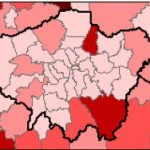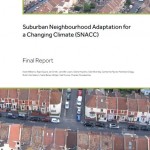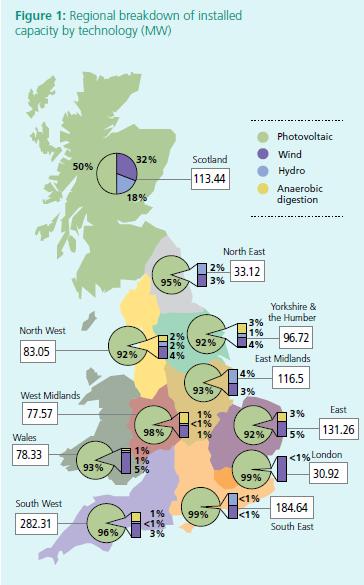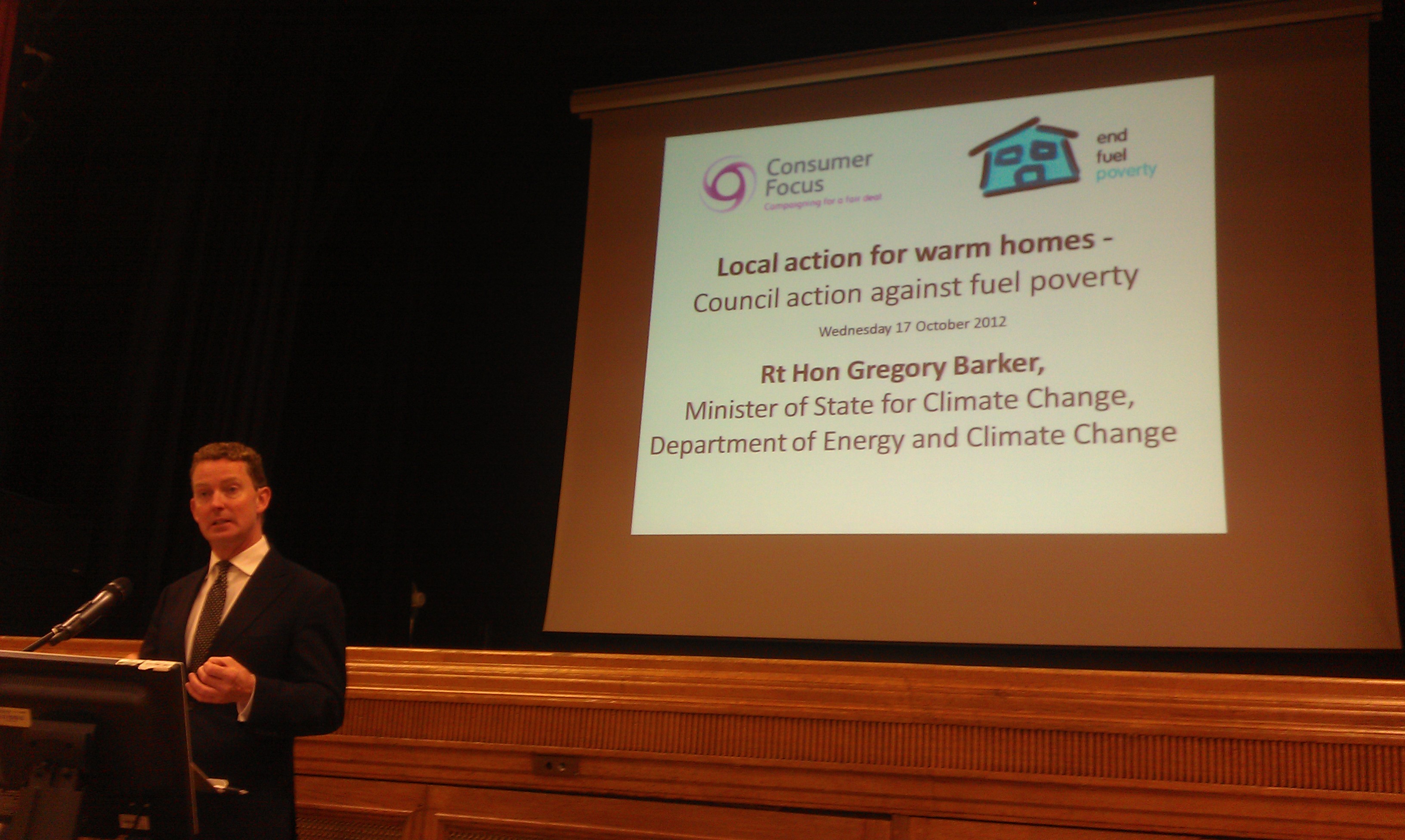Site search:
-
What’s new?
Energy for London Tags
Brent Buildings Camden Carbon Emissions CHP Cities Climate Adaptation Community Heating Community Initiatives Croydon Data DECC Decentralised Energy Distribution ECO Energy Costs Energy Efficiency Enfield FIT Fuel Poverty Funding Green Deal Hackney Haringey Housing Islington Lambeth Library Local Authorities Mayor Newham Ofgem Olympics Photovoltaics Planning RE:FIT RE:NEW Renewable Energy Retrofit Southwark Tower Hamlets Transport Waltham Forest Waste WestminsterEnergy Archives:
- February 2021 (1)
- January 2021 (15)
- December 2020 (15)
- November 2020 (9)
- October 2020 (3)
- August 2020 (5)
- July 2020 (3)
- June 2020 (4)
- April 2020 (10)
- March 2020 (5)
- February 2020 (2)
- January 2020 (3)
- October 2019 (1)
- September 2019 (4)
- August 2019 (2)
- July 2019 (1)
- August 2018 (1)
- November 2016 (8)
- October 2016 (8)
- September 2016 (2)
- August 2016 (8)
- July 2016 (14)
- April 2016 (12)
- March 2016 (16)
- February 2016 (8)
- January 2016 (4)
- December 2015 (1)
- November 2015 (1)
- October 2015 (16)
- September 2015 (3)
- June 2015 (1)
- May 2015 (1)
- April 2015 (1)
- March 2015 (1)
- February 2015 (1)
- January 2015 (1)
- December 2014 (18)
- November 2014 (4)
- August 2014 (8)
- July 2014 (7)
- June 2014 (25)
- May 2014 (8)
- April 2014 (4)
- March 2014 (12)
- February 2014 (7)
- January 2014 (13)
- December 2013 (11)
- November 2013 (15)
- October 2013 (15)
- September 2013 (18)
- August 2013 (5)
- July 2013 (20)
- June 2013 (33)
- May 2013 (8)
- April 2013 (16)
- March 2013 (25)
- February 2013 (14)
- January 2013 (20)
- December 2012 (23)
- November 2012 (23)
- October 2012 (25)
- September 2012 (14)
- July 2012 (12)
- June 2012 (43)
- May 2012 (20)
- April 2012 (8)
- March 2012 (40)
- February 2012 (39)
- January 2012 (40)
- December 2011 (22)
- November 2011 (40)
- October 2011 (33)
- September 2011 (48)
- August 2011 (40)
- July 2011 (58)
- June 2011 (41)
- May 2011 (80)
- April 2011 (38)
- March 2011 (33)
- February 2011 (25)
- January 2011 (24)
- December 2010 (3)
- November 2010 (7)
- October 2010 (6)
- September 2010 (7)
- August 2010 (1)
- July 2010 (2)
- June 2010 (4)
- May 2010 (1)
- March 2010 (3)
- February 2010 (3)
- December 2009 (5)
- November 2009 (2)
- October 2009 (3)
- July 2009 (3)
- June 2009 (1)
- April 2009 (1)
- March 2009 (1)
- February 2009 (1)
- January 2009 (1)
- December 2008 (2)
- October 2008 (1)
- September 2008 (1)
- July 2008 (1)
- March 2008 (2)
- January 2008 (2)
- October 2007 (1)
- September 2007 (3)
- July 2007 (1)
- March 2007 (1)
- February 2007 (3)
- November 2006 (3)
- August 2006 (1)
- February 2006 (1)
- May 2005 (1)
- February 2004 (1)
Monthly Archives: October 2012
Kings Cross Energy Centre Open Day
31 October 2012: Operators of the Kings Cross Energy Centre, Vital Energi, have announced that they will hold an Open Day and tour of the Centre on November the 22nd. Full details of how to register here. The Energy Centre lies at the heart of Europe’s largest city centre regeneration scheme with the £2 billion, 67-acre scheme even having its own postcode – N1C. Three gas-fired CHP engines will provide 7MW of electricity and will supply the bulk of the heat demand onsite – along with a supplementary biomass boiler and thermal heat store (the latter being a big hot water tank!)
For further information see Kings Cross Central’s Energy Centre Explained page and an earlier post which highlights that the “CHP engine will not only generate electricity, which will be fed into the grid network, but will also provide heat for the development wide District Heating System (DHS). All of the 70 buildings at King’s Cross, from the University of Arts to the Camden Council building, BNP Paribas Real Estate’s new offices and the Great Northern Hotel, will be connected to the DHS.”
‘Community energy is on the up. But will the government hobble it?’
29 October 2012: Good post on the Guardian’s website about the emergence of community-led energy schemes over the past year and – worryingly – the potential negative impacts that might arise out of the Government’s forthcoming proposals for the Electricity Market Reform (EMR) in the Energy Bill on smaller scale generators. Some of these issues are picked up in a useful briefing by the Renewable Energy Association (REA) ‘ 10 actions needed to make EMR work for renewable power‘.
Posted in News, Renewable Energy
Tagged Community Initiatives, Decentralised Energy, EMR, Renewable Energy
Leave a comment
Identifying London’s Waste Heat Sources
October 2012: The Mayor has approved funding for the analysis of the “economic, energy system resilience and environmental potential of waste heat sources in London to identify local energy supply investment opportunities, inform Mayoral and national policy and support funding applications to the EU FP7 programme (£2 million) and the Technology Strategy Board (£25 million).”
The project – Analysis of the capacity and investment potential of waste heat sources in London to provide affordable energy to homes and businesses – will be undertaken from September 2012 to March 2013 and is expected to cost up to £110,000. The approval form sets out that the “potential solutions to be analysed here – the quantum, location, ownership, engineering requirements, economic potential – are expected to identify specific project opportunities to demonstrate the practical potential to utilise this rejected heat and low carbon heat from grid electricity and will form the basis of funding applications for demonstration projects…Approval is sought to commission work to understand the energy saving and economic potential associated with these heat sources across London, to identify projects and to quantify economic,system resilience and environmental benefits.”
It’s also stated that the analysis will inform Government’s forthcoming Heat Strategy scheduled for release in March 2013.
Posted in News
Leave a comment
RE:NEW Green Deal delivery
October 2012: Just posted on the GLA website is a Mayoral approval form for the current round of RE:NEW 2012/13 (also called RE:NEW II). The approval form is signed and dated by the Mayor back in April (pre-election) but has only been posted on the GLA website on 16 October. It provides for £3m to be allocated to retrofit a further 24,000 homes (on top of the 64,000 homes treated under RE:NEW I) by the end of this calendar year. An additional £300,000 is being spent on stimulating early Green Deal uptake with a delivery agent procured (using the RE:NEW framework) to deliver RE:NEW Green Deal to residents in selected areas.
The approval form sets out that “The focus of the RE:NEW Green Deal delivery would be to generate early leads for Green Deal assessments once it becomes available, test different methods for generating this take up (including the creation of local champions and referral fees) and other engagement and education tools.”
“It is expected that through this work stream, 3,500 homes would have signed up for a Green Deal visit by March 2013. As part of the wider engagement, there would also be an element of education and promotion of Green Deal across London as a whole. This would enable any Londoner to sign up to receive a Green Deal survey as soon as available.”
Further information on RE:NEW targets is available in the following post.
Posted in News
Tagged CERT, ECO, Energy Efficiency, Green Deal, insulation, Mayor, RE:NEW, Warm Front
Leave a comment
GLA to apply for a ‘junior’ electricity supply licence
29 October 2012: The GLA are apply to the energy regulator Ofgem for a ‘junior or sometimes known as ‘lite ‘ electricity supply licence. This allows for smaller electricity generators to sell their electricity at market value. The approval form sets out that “the application to Ofgem [is] for a licence lite licence so the GLA can buy the electricity produced by London boroughs and other public sector decentralised energy generators in London and sell it at proper market rates”. This project builds on an earlier GLA project (details here).
The background to this issue is actually quite simple but solutions complex! Luckily some helpful commentaries are posted on the web by Carbon Limited and also law firm Nabarros. At the heart of the argument is that smaller generators are often in poor bargaining positions with the electricity retail market when wanting to sell their electricity. The true value of the electricity generated by a decentralised CHP, or PV array, could be realised by selling the electricity direct to consumers (very roughly say, around 12-14 pence per unit) rather than the wholesale market (again roughly, but say 4-6 pence per unit).
However, to do this, an electricity supply licence (for generators exporting more that 2.5 MW) is, in most instances required, and holding such a licence places a number of very complex and costly requirements on the licence holder, effectively creating a barrier to entry for smaller generators in this market. Recognising this situation, Ofgem introduced arrangements for a new ‘lite supply licence’ which – in theory – would allow the holder to sell their electricity more widely but provided exemptions to these smaller generators from the requirement to be involved in a number of complex electricity market processes, as would normally be required under a ‘full’ supply licence conditions (see the ‘Final Proposals document by Ofgem posted here for more on this).
In practice however, though a project with a number of London boroughs looked at this issue earlier this year, no participants have applied to hold such a licence. Hence, with this action, the GLA is looking to test Ofgem’s process and apply for this new licence and support the development and production of decentralised energy supply in London.
Waltham Forest has highest number of PV installations of any London borough
 24 October 2012: A recent post provided some regional detail of the uptake of Feed in Tariff (FITs) generators – predominantly photovoltaics (PVs) – across the UK (at the English regions and devolved administrations level). DECC have today released an updated spreadsheet providing a breakdown on the number of installations at local authority and parliamentary constituency level. This highlights that:
24 October 2012: A recent post provided some regional detail of the uptake of Feed in Tariff (FITs) generators – predominantly photovoltaics (PVs) – across the UK (at the English regions and devolved administrations level). DECC have today released an updated spreadsheet providing a breakdown on the number of installations at local authority and parliamentary constituency level. This highlights that:
- London’s suburbs do the best in relation to PVs installed with Waltham Forest having the highest number of installs of all London boroughs (701); then Bromley (666), Croydon (525) and Havering (440).
- The parliamentary constituency of Walthamstow has accordingly the highest number of PV installations of any constituency in London (373). [For context, Tiverton in Devon has the highest number of installations of any UK constituency – 2,456]
- Unfortunately installed capacity (ie kWe of generation) by local authority/constituency is not available – which would be a more helpful metric (it is included available on a per installation basis in Ofgem’s comprehensive FIT spreadsheet (370k+ entries) – the latest of which was published a few weeks ago – and which Energy for London is currently going through and will report on shortly).
- A not very helpful map is also provided by DECC today of Number of domestic photovoltaic installations by Local Authority, as at end of September 2012
In addition to the direct link here the spreadsheet can also be downloaded from the following DECC FITs webpage (the file is called ‘Sub-regional Feed-in Tariffs confirmed on the CFR statistics‘).
Posted in Data Store, News
Tagged Bromley, Croydon, Data, FIT, Havering, Photovoltaics, Waltham Forest
Leave a comment
How can existing suburban neighbourhoods be best adapted to reduce further impacts of climate change?
 23 October 2012: This report sets out that:
23 October 2012: This report sets out that:
- It is in suburbs that the majority of the population will be affected by climate change.
- The impacts of these changes will be felt by people, in terms of, for example, increased heat stress and reduced comfort during hot spells,restrictions on water use, reduced air quality, and stress and costs associated with flooding and storm damage.
- There is no clear process, or delivery mechanism,for adaptation and/or mitigation at the suburban neighbourhood scale.
Download the report from the Suburban Neighbourhood Adaptation for a Changing Climate (SNACC) website here.
Energy and Climate Questions to the Mayor
October 2012: This month the Mayor has been asked questions in relation to:
a London-specific target under the Government’s forthcoming Energy Company Obligation (ECO) programme; progressing in achieving the Mayor’s Hydrogen Powered Vehicles strategy; the provision of energy efficiency support to SMEs in London; work being undertaken under the Mayor’s Decentralised Energy Project Delivery Unit; support for Cooperative Renewable Energy projects; how London will benefit under Energy Company Obligation (ECO); a list of all current Decentralised Energy projects supported; the roll out of the Green Deal in London; work to support the support the non-domestic Green Deal programme in London; the scale of the Mayor’s Green Deal programme in London; Guidance on low carbon cooling systems; low/zero carbon measures secured through the GLA’s planning process; GLA review of the potential for low and zero carbon microgeneration technologies; future carbon emissions related to new infrastructure projects; work by the GLA with ICLEI, C40 and Eurocities on climate mitigation and adapation; and update on Low Carbon Skills Forum; planned budgets for future carbon mitigation programmes; carbon savings achieved by the Mayor’s programmes; the success of the Feed in Tariff (FIT) programme in London; an update on the London Thames Gateway Heat Network; the publication date of the Mayor’s Technical Guide for District Heating; and progress on the development of district heating commercial templates and a London Heat Charter. Planning guidance on sustainable design and construction; progress under the RE:FIT programme; targets under the RE:NEW 2 programme; annual progress report on the Mayor’s climate programme; an update on the London greenhouse gas inventory (LEGGI). Publication of the London Environment Strategy (see here for the answer referred to); the number of Solid Wall Insulation companies in London; Mayoral action on tackling Fuel Poverty; energy efficiency of new homes in the Olympic park; proposal for a zero carbon development around the Olympic site; energy consumption of superfast broadband; and future plans for Edmonton incinerator.
A series of questions (below) were asked in relation to RE:NEW – all of which were directed to a question asked earlier this year pointing to the November 2012 publication of the evaluation of the RE:NEW programme.
How many pensioner households treated under the RE:NEW programme; number of solid wall homes treated under RE:NEW; fuel poor households treated under RE:NEW; flats treatedunder RE:NEW; private rented homes treated under RE:NEW; the number of solid wall installations undertaken under RE:NEW; the number of cavity wall insulation installations undertaken under RE:NEW; the number of loft insulation installations under RE:NEW; the number of benefit checks undertaken through RE:NEW; and how RE:NEW has helped drive up the CERT and Warm Front programmes in London.
Previous questions to the Mayor can be found here.
Posted in Decentralised Energy, News
Tagged CERT, Community Heating, Decentralised Energy, Fuel Cells, Fuel Poverty, Green Deal, Jobs, Microgeneration, Planning, RE:NEW, SMEs, Solid Wall Insulation, Warm Front
Leave a comment
London continues to fall behind on FITs
October 2012: Ofgem have just published their latest newsletter on the Feed in Tariff (FITs) scheme which provides an overview on the number of installations that are now participating. The newsletter sets out that as at June 30 2012:
- A total of 285,235 renewable installations have been registered under the scheme since 1 April 2010
- 1,241.05MW of Total Installed Capacity (TIC) has been registered under FITs since 1 April 2010; and
- A total of £102,024,574.64 in FIT payments were due to generators in the quarter 1 April to 30 June 2012.
The newsletter includes a figure (above) providing a regional breakdown of generation (in megawatts/MW) across the UK and clearly shows that London has the lowest installed capacity of FIT capacity at only 30.92MW. Compared with the highest region, the south-west, London has less than 1/8th of the capacity installed. Download the FITs latest newsletter here.
Posted in News
Leave a comment
Planning reforms ‘totally ignore climate change’, warn green groups
October 2012: BusinessGreen article highlighting that “Green groups have today warned that planning reforms that the government predicts will encourage billions of pounds of new investment in energy projects “totally ignore climate change”.
The new Growth and Infrastructure Bill, published yesterday, brings together a range of measures intended to give energy and building companies the confidence to invest and boost economic growth
It includes provisions to make it easier for utilities to change designs mid-project to incorporate new energy-efficiency technology with out having to restart the planning process…” Read the full story here.
The Department for Communities press release can be viewed here and a background note to the Bill can be downloaded here and the actual bill here. Friends of the Earth have issued the following news release.
London should not be a ‘no-go’ area to suppliers meeting their energy efficiency obligations
17 October 2012: Over 100 people came together in Islington’s Assembly Hall for the End Fuel Poverty Coalition’s Local Action for Warm Homes event. The aim of the conference was to show how councils, working with the End Fuel Poverty Coalition, can play a central role in helping the Government meet its statutory target to eliminate fuel poverty (as set out in the Warm Homes and Energy Conservation Act 2000). Energy Minister Greg Barker MP addressed the audience on current Government action to tackle fuel poverty.
Energy for London asked the Minister about how proposals to change the definition of fuel poverty – which correctly take housing costs into consideration – will lead to a doubling in the number of fuel poor households in London (see previous post for further details). Mr Barker stated that:
- In terms of tackling fuel poverty London needs to recognised as a special case
- He would not allow London to be a “no-go area” for energy suppliers in meeting their energy efficiency obligations (especially in central London) simply because of the higher costs of delivery
- DECC had no specific solutions on tackling fuel poverty issues in London as yet – but the department has a good working relationship with the Mayor and that they would be following up on options following the conclusions of the current fuel poverty definition consultation.
‘RE:NEW is delivering again across London’
16 October 2012: The Mayor’s RE:NEW domestic energy efficiency programme has just tweeted that it is delivering again across London. Further details on how you can save “up to £300 a year on your energy bills” on the following link.
Posted in News
Leave a comment



